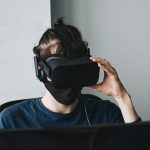According to Forrester, there will be an expected rise in the use of PC’s and smartphones into the future as these devices will offer new features of augmented and mixed reality. Although this may increase competition for VR, it is predicted that in the year 2025, VR’s market share will reach $48.5 billion. The expected rise in the VR market will be conducive to the prices of headsets expected to drop and become cheaper for corporations to purchase at scale. So, what better a time than now to learn about the possibilities of how VR training can merge smoothly with your company’s training regimes.
This article will look into the quickest ways to calculate the number of headsets that your business should purchase to achieve a cost-effective and long term training solution. Here is a breakdown of PwC’s report about discovering the number of headsets they would need, along with many insights the company took into consideration before investing.
PwC Case Study Provides A Practical Guide On The Number of Headsets Companies Should Invest In
In 2019 PwC decided to form a case on the difference of learning through v-learning, e-learning and classroom learning. The study divided over 1,600 colleagues into one of the three learning groups. Participants in v-learning were located across 12 offices in the US, with HDM’s deployed to each location. PwC technology group decided to use the Oculus Quest HDM to carry out the study.
Upon research PwC’s technology group came up with just two headset deployment models:
1:1 a single headset provided to every individual user- this was a definite cost-prohibitive approach.
1:Many restrict the number of headsets, as one headset could be used to train a group of people. This required sending a handful of headsets to each location, and putting in place a scheduling system to ensure each participant was allocated a one hour slot to complete training.
A Quick Summary of Variables to Make Your Decision the Right One
It was an easy decision of PwC’s in choosing to work with the 1:Many deployment model. The next step was to calculate the number of headsets to purchase. To do so, the team dived into key variables and seeing which will have a direct impact on the amount of HDM’s (head-mounted displays) that would fit perfectly with PwC’s low-budget and limited spacing.
A key tip: It is crucial to consider how many hours the training will take and how many trainees at each office need to complete training. It was noted in the report, ‘the requirements to train 10,000 employees in 30 days are significantly different to training 10,000 employees over 12 months.’
Once these findings were gathered, the team looked into how many days they would conduct training. They opted for a total of twenty days with the chance of some trainees to drop out last minute, and also ensuring a few extra headsets available to avoid delays. With that in mind, the PwC team factored into account what space would be available for use over the duration of the case study period at each office location and how many headset displays could be fitted into these rooms.
The End Calculation
PwC’s final calculation looked like this: one headset per training location, times the number of locations per city, times the number of spares. In total this amounted to 57.6 headsets, however the team decided to purchase an extra 15 more, just to be safe.
Be aware, the greater the number of headsets an organisation needs, comes a responsibility of creating a secure management system. There are management tasks such as maintaining software patches and making sure users do not install unauthorised applications, that are common responsibilities for MNC’s that use VR for training purposes. As PwC is spread geographically across the US, VR has to be purchased and installed as part of the company enterprise. Where as, the smaller the purchase, the more likely VR is able to be managed manually. In saying this, every third part company is different and some may offer standalone solutions. It is important to first research into levels of management that manufactures and third parties have available.
At YesVR, we offer a number of innovative training solutions uniquely tailored to suit the style and complexity of a company’s learning landscape. We are particularly passionate about bringing VR into the Australian business sector and transforming the productivity and efficiency of large Australian companies.
Please reach out to us if you have any questions about how integrating VR training looks for your business. We are more than happy to help!
Written by Lauren Tizzone







